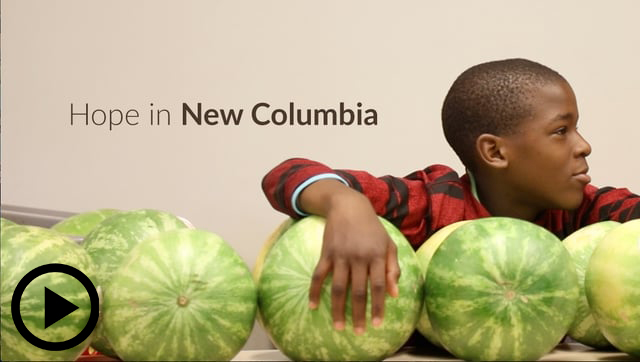Teenagers say government and charitable programs designed to help families cope with hunger could do a better job of reaching young people and helping them get the food they need.
The findings come from a report released Monday by researchers at the Urban Institute and Feeding America, the first of its kind to examine how teenagers in particular experience food insecurity.
For many years, little has been known about the details of teenagers’ lives when it comes to hunger. Most research has focused on younger children or grouped all youth under age 18 together.
But in the new report, teens reveal that they want to see more opportunities that combine food with other programming, such as a movie night where dinner is served, and want programs to use discretion because of the stigma they feel accessing food.
[Related: Partnering with Schools Reduces Hunger Among School Kids and Families]
“They should just open a place and serve meals while people are playing basketball. There are a lot of people who go play basketball over the weekends or during the summer and they are hungry,” said one teenage boy the researchers interviewed.
A teenage girl stressed the importance of anonymity: “They should be understanding of teenagers’ pride and know they don’t want to be seen so have a better location,” she told the researchers.
The teens also said they wanted improved outreach about the options available to them and broader, structural changes that make food more affordable, such as improved economic conditions in their neighborhoods.
And, they wanted to be involved in improving their communities.
Researchers conducted focus groups with nearly 200 13- to 18-year-olds in 2014 and 2015 in 10 low-income communities to create a portrait of teen food insecurity and jumpstart further research into their needs.
The researchers highlighted one project in Portland, Oregon, where a youth advisory board, the local housing authority and a food bank came together to find solutions rooted in teens’ experiences of hunger.
The pilot program that grew out of the Portland Teen Food Collaborative now includes monthly food distributions that will eventually be planned and coordinated by teens; access to counseling, educational opportunities and other services; and a leadership curriculum.
“You can see how proud teens are to be part of the solution. It’s beautiful,” said Susan J. Popkin, a senior fellow at the Urban Institute.
Youth service workers and others interested in curbing teen hunger should consider key lessons from the pilot such as:
- Teenagers want to be part of developing resources for their communities.
- Trusted adults can help connect with teens to make them feel at ease sharing their experiences and ideas for solutions.
- Emergency and supplemental food are needed for teens, as well as employment, skills development and leadership opportunities.
- Teenagers want to protect their families, so support for the whole family is needed.
Adult roles, risky behaviors
Popkin said she was struck by the consistency of the teens’ experiences, regardless of setting.
“This isn’t something that’s just happening to kids in a handful of communities,” she said. “We heard the same things from kids no matter where we were.”
More than 15 million children, or about one in five of those under age 18, lived in a food-insecure household in 2014, meaning their household lacked access to enough food for an active, healthy life for everyone, according to federal data.
The focus groups revealed how teens often take on adult roles to help their families, from studying deals at local grocery stores to skipping meals so their younger siblings can eat.
They also worry a great deal about stigma and can be reluctant to accept food if they feel singled out or think a program is aimed at younger children.
In addition, they may make risky choices to help their families get food, including shoplifting, selling drugs to make money for groceries, entering into relationships with older partners for food or trading sex for food.
Emily Engelhard, managing director of research and evaluation at Feeding America, said the findings will help food banks in the group’s networks reach more teenagers. They point to the need to find best practices, disseminate them widely and determine which methods work in which communities.
The pervasiveness of food insecurity among teenagers also points to the need for a strong safety net, through both the Supplemental Nutrition Assistance Program and other federal initiatives, such as school meals, she said.
“Given how dire the situation is for teens, the idea of taking anything away is pretty frightening,” she said.
Committees in both the House and the Senate approved bills this year that would reauthorize child nutrition programs, but with limited days left in the legislative session, it’s unclear if the legislation will advance further.
More related articles:
Senate Committee Approves Changes to After-school, Summer Meals
































